Art World
How a Female-Led Art Restoration Movement in Florence Is Reshaping the Canon
The organization Advancing Women Artists is at the fore of finding forgotten female Masters like Plautilla Nelli.
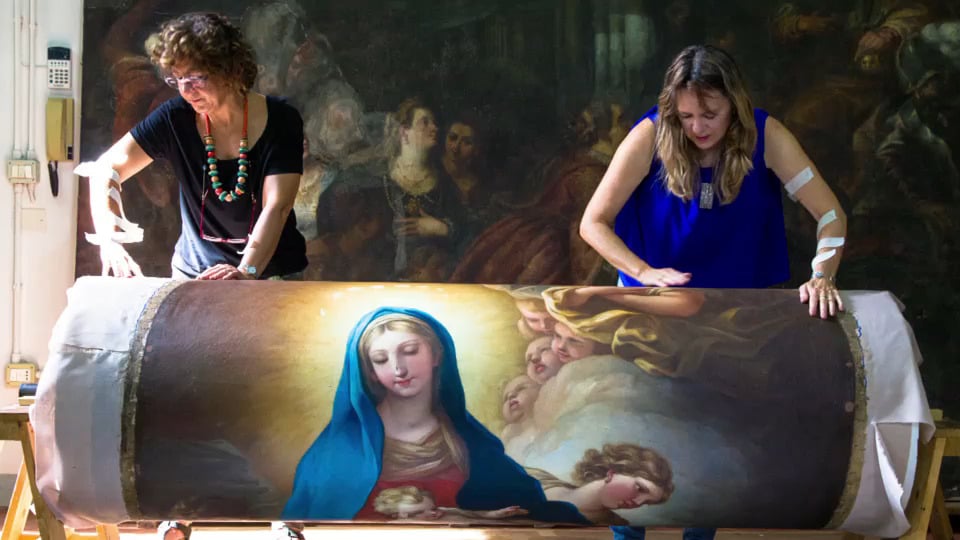
The organization Advancing Women Artists is at the fore of finding forgotten female Masters like Plautilla Nelli.

Kate Brown

Sometimes, all it takes is for someone to ask the right question.
That is exactly what Jane Fortune did on a visit to Florence 12 years ago. While touring the Renaissance city’s exquisite museums and fresco-covered churches, the American philanthropist began to wonder, “Where are the women?” Her search for an answer set Fortune on a passionate quest to restore the lost legacies and artworks of Florence’s forgotten female artists, digging into museums’ archives and dusty deposits with her organization, Advancing Women Artists (AWA).
One exemplary Renaissance work that AWA has revived is The Crucifixion, which is getting its final touches over the summer before the restored painting will finally be unveiled at Italy’s San Salvi Museum this October. It’s one of many works by Sister Plautilla Nelli, a 16th-century self-taught artist and nun who was hugely famous in her time, but whom art history has forgotten.
“And if they don’t know [Nelli], how many other female painters do they not know?” Fortune asks.
Since the foundation launched more than 10 years ago, AWA has restored some 53 artworks. By September, that number will jump to 58. The nonprofit has become the go-to for Florentine curators who want to research their own collections, which house many works by women (AWA has inventoried 2,000 so far) that have been unseen for centuries. “That’s half the population that’s not being heard,” Fortune says. “I want to give them a voice.”
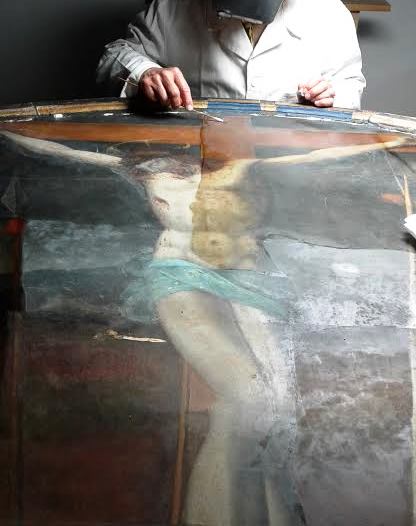
Plautilla Nelli’s The Crucifixion is currently being restored for San Salvi Museum, where it will go on display in October. Photo Jane Adams.
AWA has some ground rules for museums that engage them for help: If the work in question comes out of storage, it doesn’t go back into storage. It goes on the wall. And if a work needs to be restored, the vast majority of projects are carried out by female conservators.
Linda Falcone, the director of AWA, explains that the majority of restorers in Florence are in fact women, but that it was not always this way. The shift was caused by a devastating flood that struck in 1966, which led to the loss or damage of millions of artworks and books, including many masterpieces. A group of scholars, art students, and other art experts dubbed the “Mud Angels” flocked to the city to help with the restoration effort, as did the so-called “Flood Ladies”—female artists who donated art to replace lost masterworks.
Art historians like Kirsten Aschengreen Piacenti, who came from Denmark, were eager to help. In turn, they established a female-led network of experts, many of whom are still active today. Piacenti went on to become the head of Florence’s Museum Stibbert until 2012, and she is among an impressive number of female curators who work in the city’s institutions.
“It was the first time women began wearing trousers in Florence,” Falcone says. “Women’s liberation in Florence is deeply linked to the art restoration effort.”
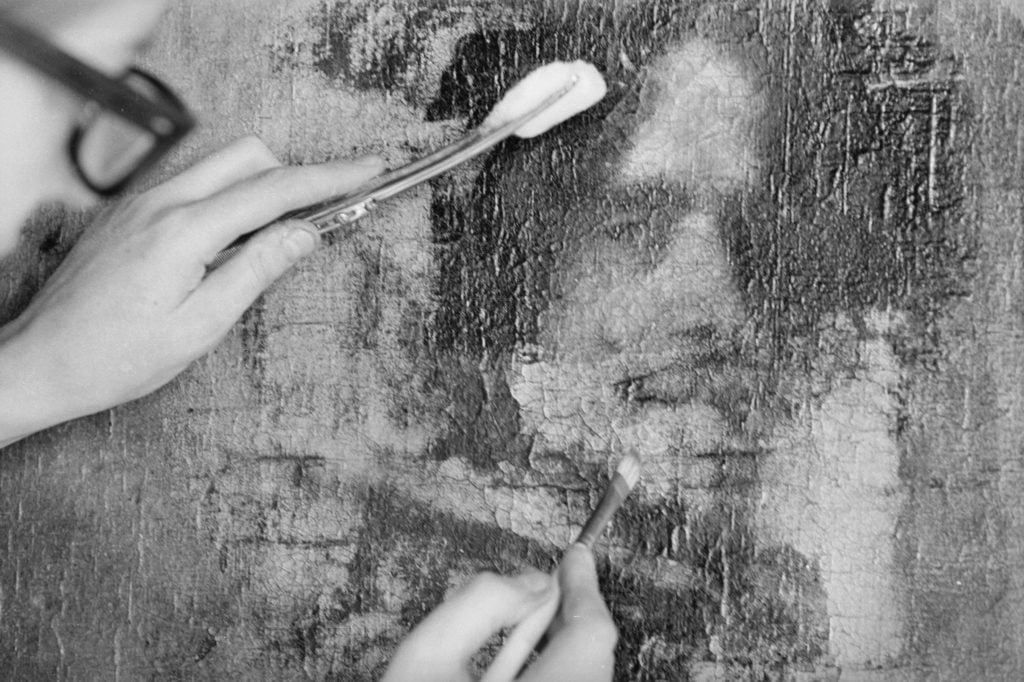
Art restorer Claire Wilkins at work restoring a self-portrait of the Spanish artist, Velasquez, after flooding at the Uffizi Gallery in Florence in November 1966. Photo by Terry Fincher/Express/Getty Images.
What was once a male-dominated field is now about 90 percent run by women, Fortune estimates. Today, the city has more than 30 women working as restorers at its museums, and many more in other key roles. The three top curatorial posts at Florence’s Civic Museums Association are all held by women.
“By the 1980s, many non-state studios began to be commissioned [for] work and most of them were and are run by women,” says 63-year-old Rossella Lari, who has been a restorer for 40 years and was part of the post-flood influx of experts. “There is no fixed salary. It depends on the amount of works one restores.”
Overall, restoration remains a poorly paid field in the art world. And Falcone says that in Florence, it became even more poorly paid when it became female-dominated. That’s another reason why Fortune and her team insist on supporting the female cohort.
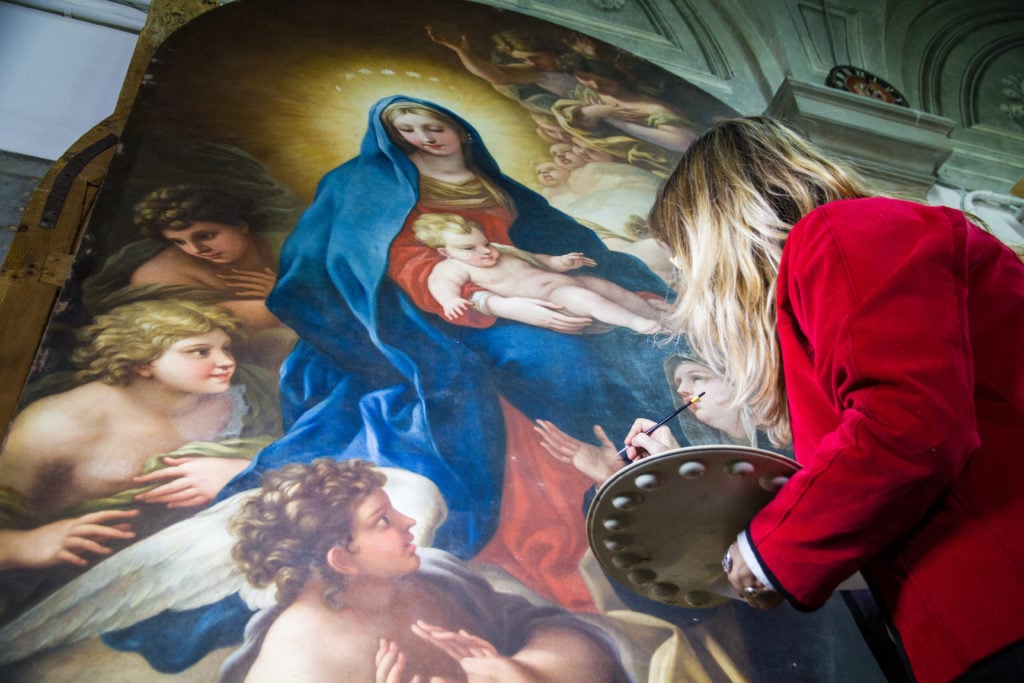
Elizabeth Wicks restores Violante Siries’s Madonna. Photo: Francesco Cacchiani.
Nelli’s The Crucifixion is on track for completion in October, but it’s far from the biggest project that AWA has underway. The artist’s major masterpiece is the Last Supper, a stunning painting—21 feet long and six feet tall—that was completed in 1560s. It’s the largest known painting by an early woman artist and is being restored before going on view for the first time in centuries next year.
Renaissance-era historian Giorgio Vasari wrote about Nelli in his acclaimed 16th-century book, Lives of the Most Excellent Painters, Sculptors, and Architects. He said that her works were in every “gentlemen’s” house in Florence. At the peak of her career, the nun was directing an all-female workshop and producing massive works, including the Last Supper.
The future Nelli may have envisioned could be summed up in the short words she left beside her signature on the back of the painting: “Pray for the Paintress.”
Now, it seems the city is finally catching up with her. Nelli had her first solo exhibition at the Uffizi last year. Florence’s mayor Dario Nardella has been an active supporter of the ambitious efforts to restore her work. “Plautilla Nelli was the most important female painter of the Florentine Renaissance,” he says in a statement. “Her city will pay her homage by exhibiting this work in the Santa Maria Novella Museum complex.”
Considering how famous she once was, it is surely about time.
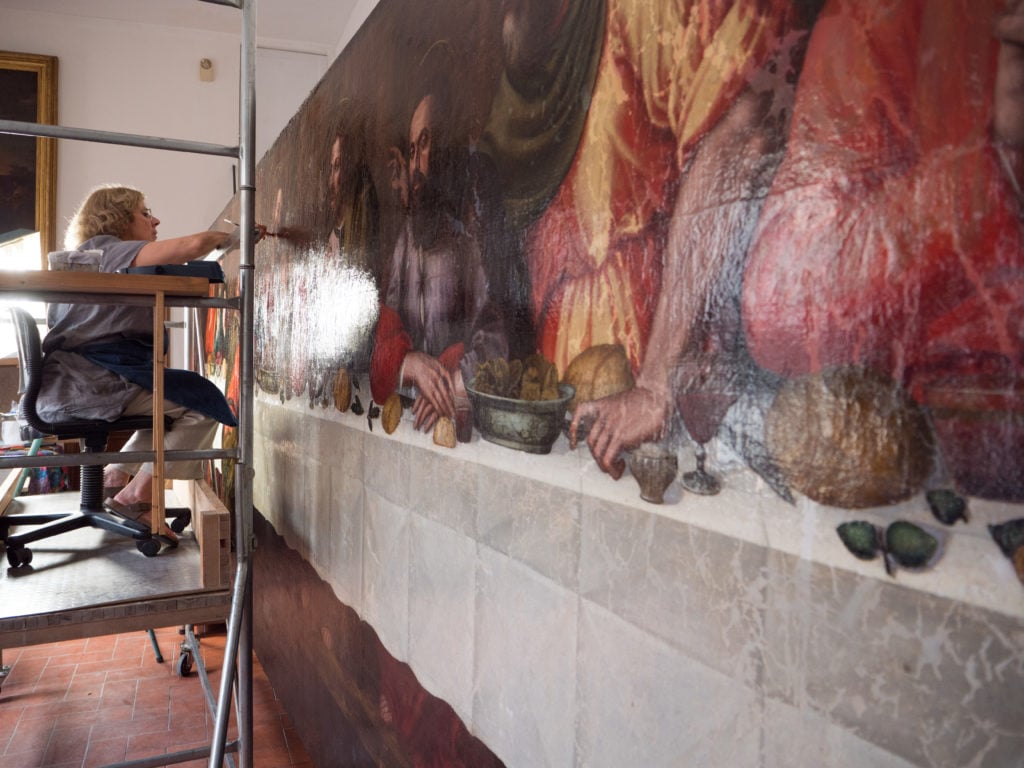
Italian conservator Rosella Iari works on Plautilla Nelli’s Last Supper. Photo: Francesco Cacchini.
Nelli worked on larger-than-life male subjects, a rare undertaking for female Renaissance artists. Only a decade ago, she had just three known works to her name. Now, nearly two dozen have been attributed to her and her all-female workshop.
“This restoration has spurred many questions about women’s artistic activities in 16th-century Florence,” says Lari, who has dedicated the last five years to Nelli’s Last Supper. “The way she paints… with strong brushstrokes and thickly applied color, [it] seems to prove the power of her personality.”
To help raise the final funds, AWA is running an “adoption program” for the apostles in Nelli’s painting. Now only Saint Simon is missing a “parent” to sponsor its restoration. The organization hopes to find an Italian supporter; so far, no Italian has stepped forward to fund the project. All told, the effort will cost $220,000.
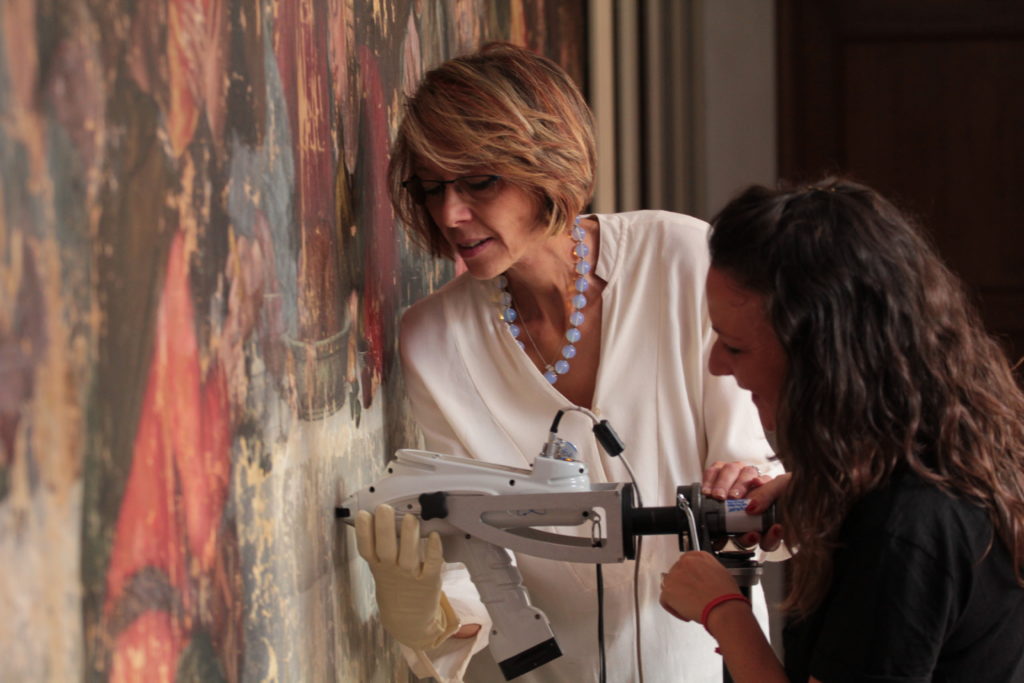
Diagnostic testing Plautilla Nelli’s Last Supper. Photo: Francesco Cacchiani.
Falcone’s work is guided by one question: “If some of these works are not masterpieces, why are they not masterpieces?”
There are, of course, many reasons: It was long illegal for women to train professionally and to study anatomy and the male nude—essential tools for artists who hoped to gain coveted commissions. Nor could women issue invoices or enjoy legal standing. “They were under the thumb of the male,” Fortune says. With the odds stacked against them, their success and, in some cases, technical abilities were limited.
“When it comes to Florence’s Civic Museum collections, the majority of art by women is from the 1900s. As with most museums, examples of works from previous centuries are rare,” says Silvia Colucci, curator of the Santa Maria Novella Museum, where Nelli’s Last Supper will be installed.
However, AWA argues that even if, in some cases, these works are less masterful, they nevertheless deserve space on the walls of Florence. They don’t have to be masterpieces—though several of them are, Falcone insists. Regardless, they tell the story of female artists in that epoch and are allegories for the imbalance of power in civic life during the Renaissance.
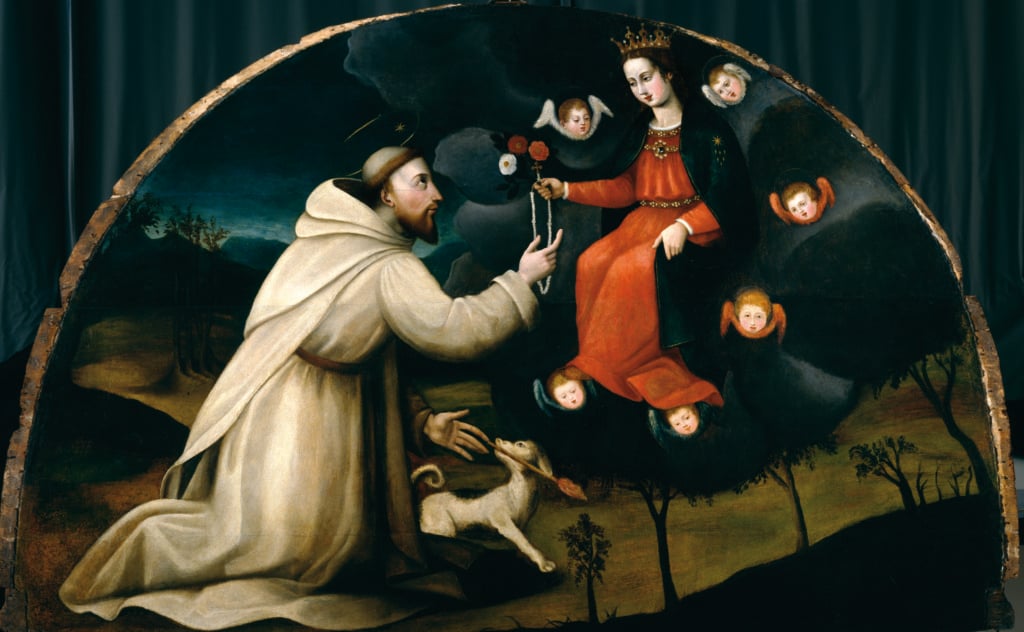
Saint Dominic Receives the Rosary restored at the San Salvi Museum. Courtesy AWA.
There is still a long way to go, and Falcone and Fortune say much is still not known about these early women artists. But asking the right questions is as good as any place to start. Indeed, the problem is not only funding restoration of the works, but getting them wall space in a city where so many better-known male artists thrived.
“These women artists were also successful in their time. It’s just history that hasn’t remembered them,” Falcone says. “It’s not just about restoring the works of art. It’s about restoring women’s place in art history.”

Foundation director Linda Falcone researches Plautilla Nelli manuscripts at San Marco Museum. Photo: Kirsten Hills.
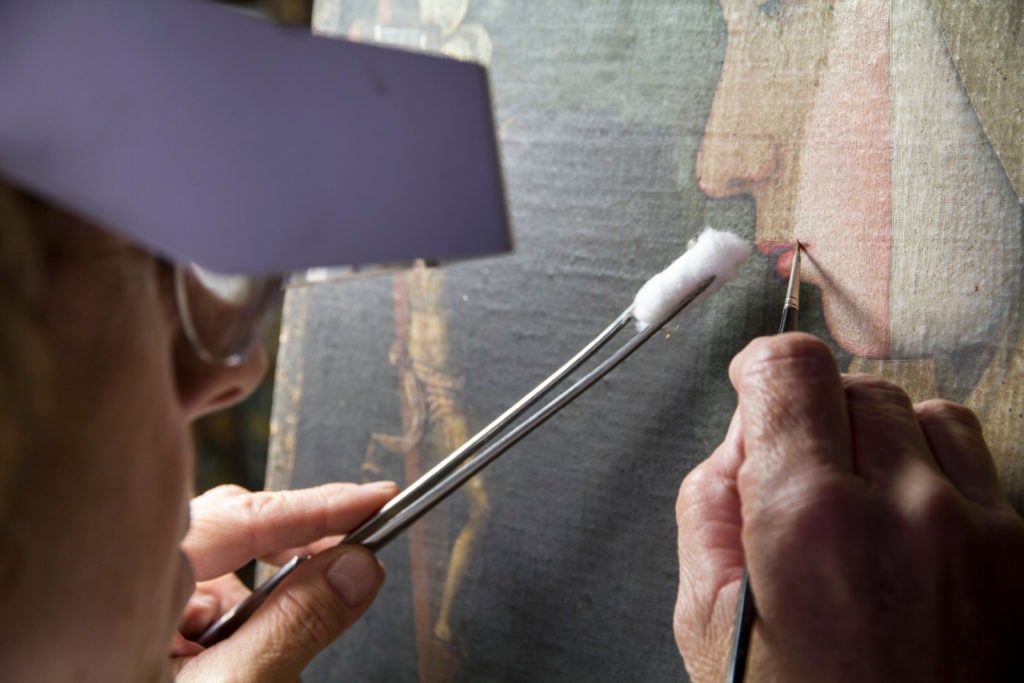
Cleaning Nelli’s Saint Catherine. Photo: Francesco Cacchiani.
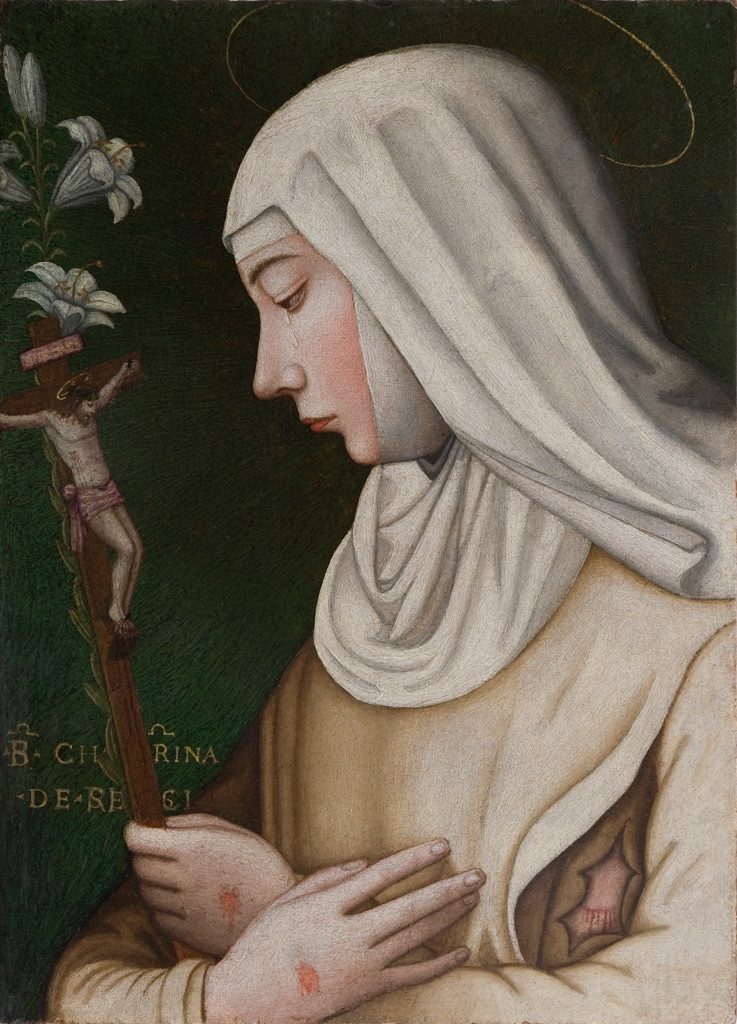
Saint Catherine with Lily by Plautilla Nelli. AWA restoration at San Salvi Museum.
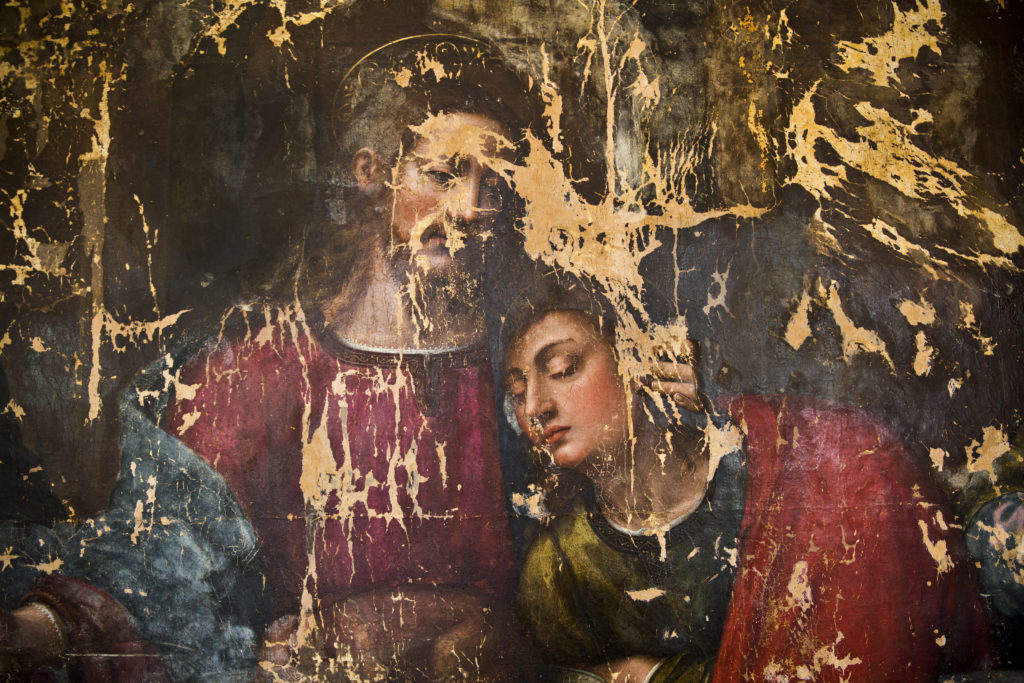
Plautlilla Nelli Last Supper pre-restoration. Photo: Francesco Cacchiani. Courtesy AWA.